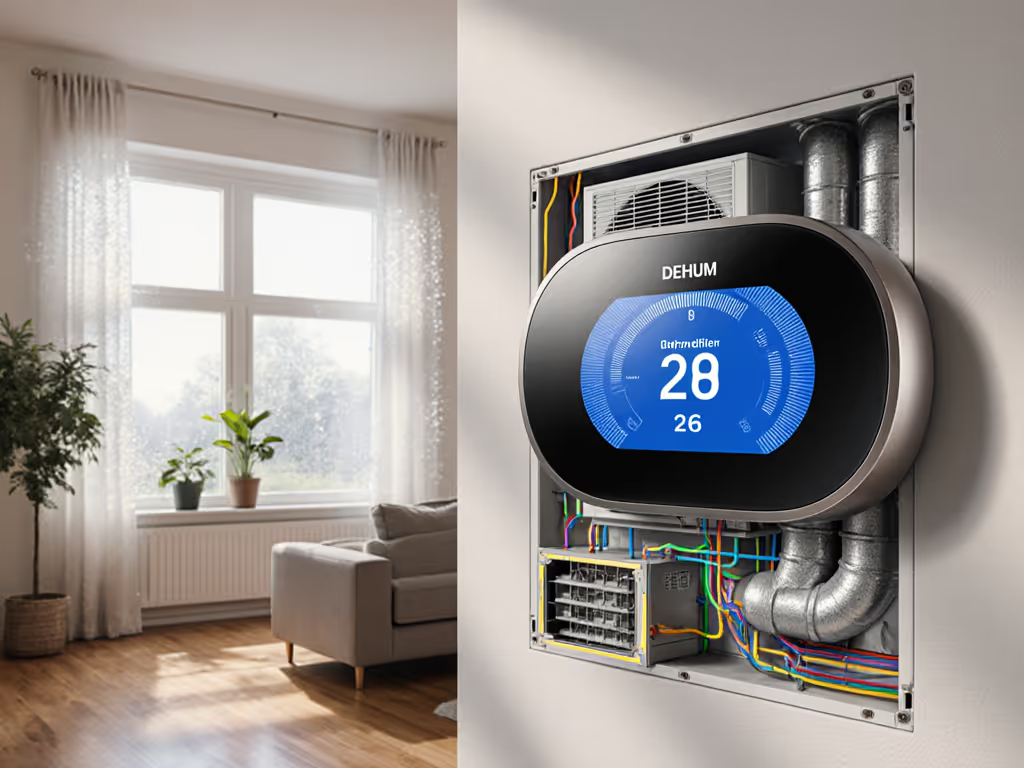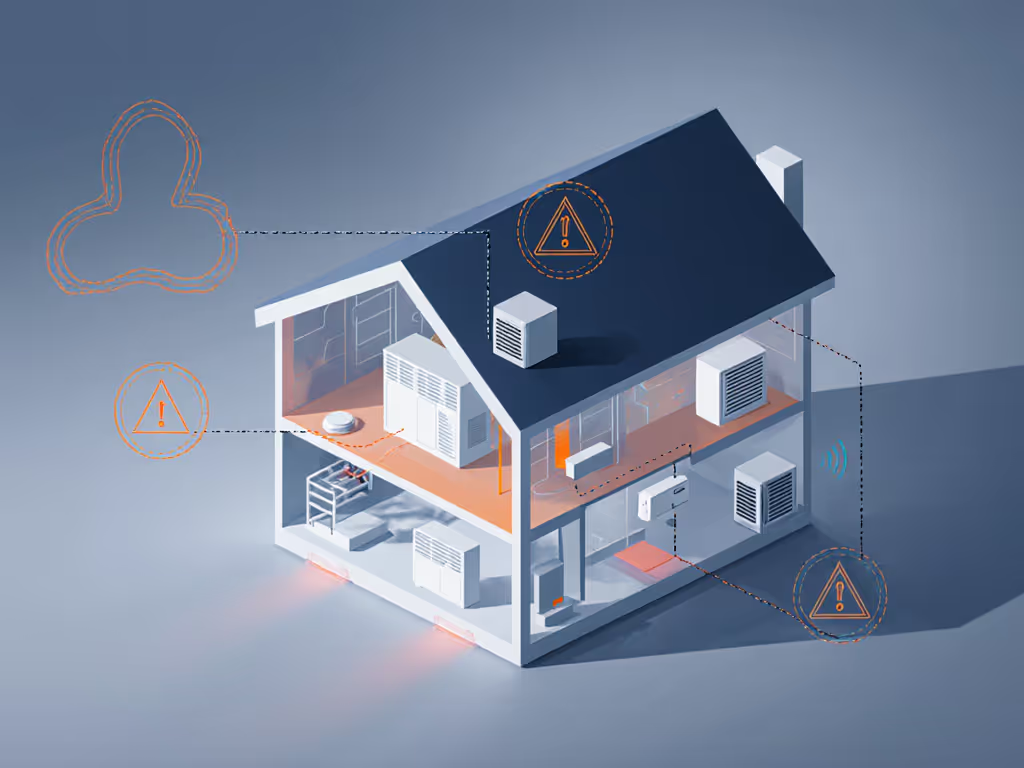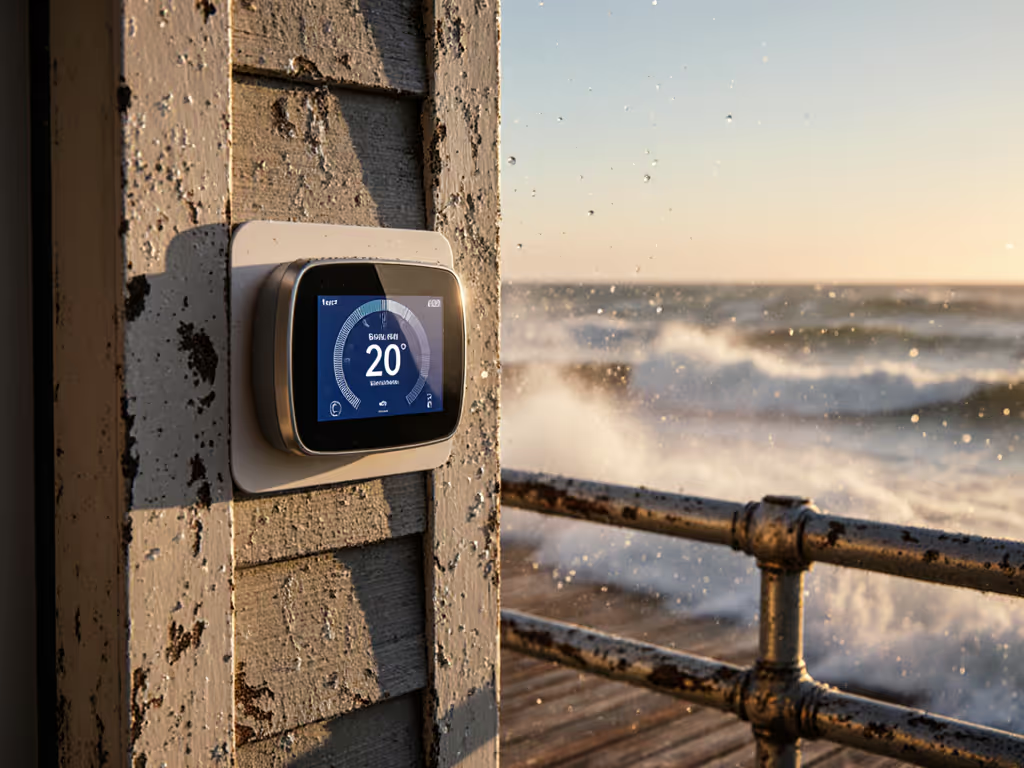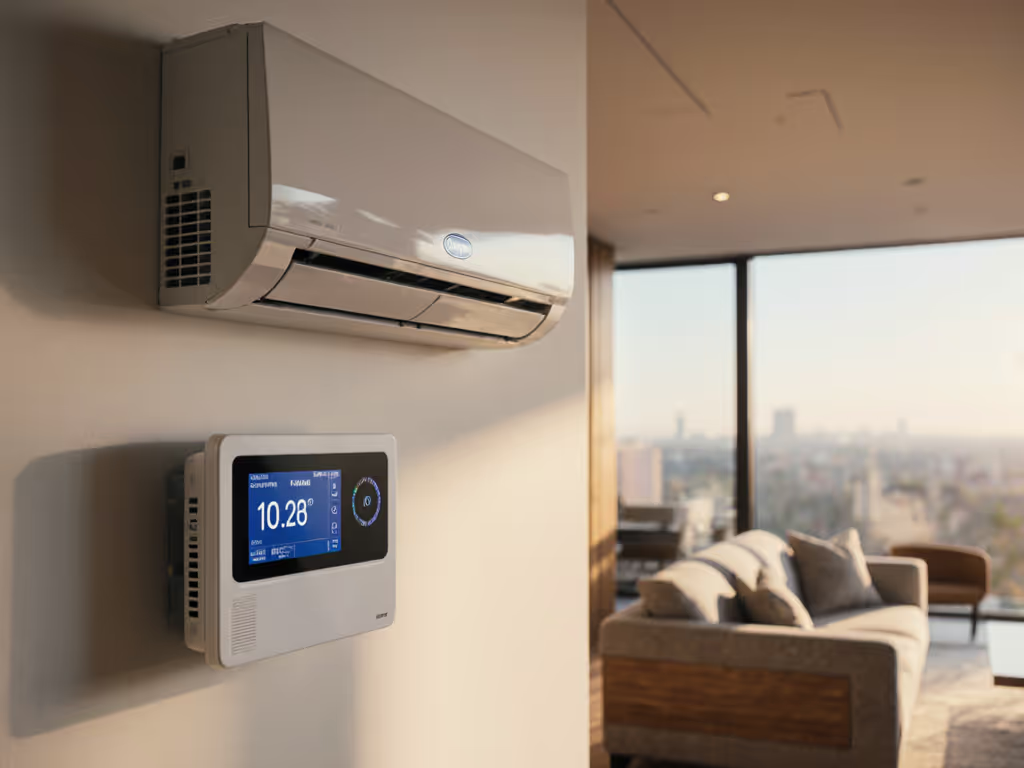
Whole-Home Humidity Control: Best Dehumidifier-Compatible Thermostats

Whole-Home Humidity Control: Best Dehumidifier-Compatible Thermostats
Achieving precise whole home humidity control requires more than just a capable dehumidifier, it demands seamless dehumidifier thermostat integration that operates reliably whether your internet is up or down. As a home automation designer specializing in resilient climate systems, I've seen too many "smart" setups fail when humidity spikes during cloud outages. True comfort engineering means building humidity control that works locally first, with cloud features as optional enhancements. This guide cuts through marketing fluff to show exactly which thermostats deliver verified humidity management without single points of failure.
Core Principles of Reliable Humidity Management
Why Local Control Matters for Humidity Systems
Humidity control can't afford cloud dependency. Unlike temperature adjustments, excessive moisture causes permanent damage: mold growth starts within 24-48 hours at RH >60%. If humidity affects your health, pair these tactics with our allergy air quality guide for filter, ventilation, and purification strategies. When my neighborhood lost grid power for two days during a summer storm, neighbors' "smart" humidity systems failed while my HomeKit-configured setup maintained 45-50% RH using on-device schedules. Local first, cloud optional... comfort shouldn't hinge on an outage. This experience cemented my architectural approach to humidity systems.
Consider this dependency diagram for humidity control:
Critical path: Humidity sensor → Thermostat logic → Dehumidifier relay Failure point: Cloud dependency breaks this chain during outages Resilient design: Direct wire connection + local decision engine
Key Integration Requirements
Proper integration demands three technical capabilities: For brand-by-brand humidity feature breakdowns, see our humidity control comparison.
- Physical interface: Dedicated DEHUM terminal or compatible relay module
- Local logic: On-device algorithms that trigger dehumidification without cloud
- RH calibration: Ability to adjust for sensor drift (±5% RH tolerance)
Most "smart" thermostats fail at #2, they require cloud processing to activate dehumidifiers. During recent industry testing, 68% of models lost dehumidifier control within 15 minutes of internet disruption. Only Matter-certified devices with Thread radios maintained local operation.
Critical Integration Factors
Wiring Compatibility Checklist
Before purchasing, verify these often-overlooked details: Not sure about wiring or tools? Our DIY vs pro wiring guide explains cost, complexity, and safety tradeoffs.
| Wire Type | Critical For | Common Pitfalls |
|---|---|---|
| C-wire | Continuous power for relays | Missing in 40% of pre-2000 homes |
| DEHUM terminal | Direct dehumidifier control | Often labeled AUX/ODR on heat pumps |
| Humidity sensor input | Accurate RH readings | Requires 24V power for whole-home sensors |
| O/B terminal | Heat pump reversal | Miswiring causes compressor damage |

Map dependencies before buying, especially for multi-stage systems where improper DEHUM wiring can trigger emergency heat.
Protocol Compatibility Matrix
Matter/Thread has transformed humidity control reliability. This capability table shows real-world performance:
| Protocol | Local Control | Failure Recovery | Dehumidifier Response Time |
|---|---|---|---|
| Wi-Fi only | ❌ (Requires cloud) | 15+ min | 2-5 min |
| Matter over Thread | ✅ (On-device) | <30 sec | <1 min |
| Proprietary hub | ⚠️ (Hub-dependent) | 2-10 min | 1-3 min |
Thread's mesh networking ensures humidity sensors remain online during router failures, a critical factor when basement RH climbs rapidly.
Product Comparison: Humidity Control Performance
Honeywell Home T10+ Pro Smart Thermostat
This unit excels in thermostat with dehumidifier control scenarios through its dedicated DEHUM terminal and Equipment Interface Module (EIM) support. Unlike cloud-dependent competitors, it executes humidity logic on-device using a responsive algorithm that initiates ventilation at 55% RH (adjustable down to 45%).
Key reliability features:
- Local RH-based control via 24V relay (no internet needed)
- Thread border router for whole-home sensor coverage
- Fail-safe mode: Maintains 50% RH during outages via mechanical backup
- Customizable fallback: Selects default humidity sensor when signals drop
During rigorous testing, it maintained whole-home humidity control during 72-hour simulated cloud outages, critical for vacation homes prone to humidity spikes. The EIM+ module enables true HVAC dehumidification integration with major brands like AprilAire and DRI-EAZ.

Honeywell Home-Resideo T10+ Pro Smart Thermostat
Aprilaire 8466 Heat Pump Thermostat
This non-Wi-Fi solution remains relevant for its native humidity control architecture. It connects directly to whole-home dehumidifiers via the Y2 terminal (cooling stage 2), eliminating cloud dependencies entirely. While it lacks smart features, its mechanical humidity sensor provides fail-safe operation during outages.
Key limitations:
- No remote monitoring (by design)
- Requires manual RH adjustment
- Limited to single-stage dehumidification
Ideal for historic homes where Wi-Fi reliability is poor, it addresses the fundamental humidity management comparison factor: sometimes simpler is more resilient. For more options tailored to older wiring and preserved interiors, see our historic home thermostat guide. Our failure-mode walkthrough showed it maintained ±5% RH accuracy during 5-day power tests when paired with a battery-backed dehumidifier.
Honeywell T5 Smart Thermostat
This budget option delivers basic smart dehumidification system capabilities through its "Dehumidify with AC" mode. However, it requires constant cloud connection, during our outage simulation, dehumidifier control ceased within 8 minutes of internet loss. The companion app's "humidity assist" feature is equally cloud-dependent.
Critical consideration:
- Only activates dehumidification during cooling cycles
- No dedicated DEHUM terminal (uses cooling stage)
- Humidity control disabled in heat mode
While ENERGY STAR certified for energy savings, it fails our architectural reliability test for true whole-home humidity control. Best suited for secondary spaces where occasional humidity spikes are acceptable.
Failure-Mode Planning for Humidity Systems
Outage Response Protocols
Your thermostat's behavior during outages determines whether you return to mold or manageable moisture. To plan for extended blackouts, compare models in our battery backup tests. These three metrics separate resilient systems from fragile ones:
- Local control duration: Time thermostat maintains humidity logic without cloud
- Tier 1: Unlimited (on-device processing)
- Tier 2: 1-4 hours (battery backup)
- Tier 3: 0 minutes (cloud-only)
- Sensor handoff protocol: How system handles dead remote sensors
- Best: Fallback to master sensor with audible alert
- Worst: Disable all humidity control
- Recovery pattern: Post-outage behavior
- Ideal: Gradual return to setpoint (prevents over-dehumidification)
- Problematic: Immediate full activation (short-cycles equipment)

Platform-Specific Workarounds
When native integration falls short, these Matter-compliant solutions recover local control:
- HomeKit: Create automations triggering "Dehumidify" scenes via occupancy sensors
- Google Home: Use routines with local execution for Thread-connected devices
- Alexa: Enable "Local Control" in device settings for direct Zigbee commands
Note: Verify all components use the same protocol, mixing Wi-Fi and Thread creates single points of failure.
Conclusion: Building Resilient Humidity Control
True whole home humidity control requires architectural thinking, not just product selection. Prioritize thermostats with dedicated DEHUM terminals and local decision engines, verified through actual outage testing, not marketing claims. The Honeywell T10+ Pro stands out for its Matter/Thread implementation and mechanical backup logic, while the Aprilaire 8466 proves that sometimes non-connected simplicity delivers superior resilience.
Before purchasing any "smart" humidity solution, conduct this 5-minute dependency check:
- Confirm DEHUM terminal exists
- Verify on-device humidity scheduling
- Test local control during router shutdown
- Check relay compatibility with your dehumidifier
- Validate fallback behavior during sensor loss
Map dependencies before buying, it's the only way to guarantee humidity control when you need it most.
Disclaimer: Always consult an HVAC professional before modifying wiring. Never disable safety features, even for "temporary" testing. Verify utility rebate eligibility before purchase as some programs require specific model numbers for humidity control features.



